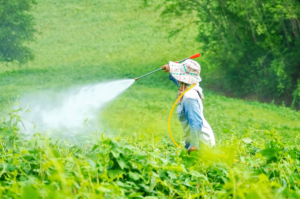Kitchen Remodel is an excellent way to enhance the appearance and function of a much-used room in your home. A remodel can also increase the resale value of your property.

Set a realistic budget and prioritize needs and wants to stay within your means. Make sure to include a contingency fund for unexpected expenses.
The first step is determining your goals for the remodel. It’s crucial to understand what you want from the space, how you use it now and how that might change in the future. You can then develop a list of features that you will incorporate into the design, and begin the process of selecting materials and products that will achieve those goals.
Kitchens are full of details that can elevate the aesthetics and functionality, from glossy backsplashes to eye-catching drawer handles. These touches can add a lot of character to the space and can make it feel like your own. However, it’s important to balance the style with practicality. You don’t want a kitchen that looks amazing but is impossible to work in.
Another key consideration is your budget. A kitchen remodel can be expensive, and if you don’t set a clear budget from the start, it’s easy to go over. You may also find yourself paying for things that weren’t planned for, like running water or electricity to new areas of the kitchen. This is why it’s a good idea to have a cushion of at least 20% of your total project cost.
Structural changes are another common part of a kitchen remodel. These may include modifying walls, moving or adding partitions and expanding the kitchen’s footprint. This is where hiring a professional team is essential, as they will have the skills and knowledge to ensure that these types of changes are completed safely and correctly.
Once the structural elements have been taken care of, it’s time to install the flooring. This is generally a fairly quick and easy task, but it’s best to wait until after cabinets and appliances have been installed before laying the floor. This will protect the flooring from damage during installation and make for a smoother finish.
Appliances are the last big-ticket item of a kitchen remodel and can be a real pain to deal with. Choosing the right appliances for your kitchen is vital, and it’s also a good idea to consider refinishing existing ones rather than buying new. This can save you a lot of money and is often just as effective.
Redesign
While it’s wise to consider trends when deciding on your kitchen remodel, it’s equally important to make sure that your new design fits your style and needs. One way to determine what your tastes are is by visiting showrooms and home renovation stores. You can also attend neighborhood home tours to observe different kitchen layouts and designs.
Once upon a time, the “kitchen triangle” was a widely accepted concept that dictated where to place your sink, refrigerator, and stove in order to optimize work efficiency. While this concept remains popular, more recent kitchen concepts have incorporated zones for cooking, eating and storage that better reflect modern lifestyles.
Customize
When you’re remodeling your kitchen, it’s your chance to build a space that fits your exact needs. Think about what you use the kitchen for and how you like to entertain. Consider how much storage you need, whether you prefer a large kitchen island or more open shelves, and what your favorite colors are.
It’s important to choose a color scheme that coordinates with the overall design style of your new kitchen. This will guide you when choosing the cabinetry, countertops, and lighting. It’s also a good idea to make a list of all the features you want in your kitchen, including any gadgets that will add convenience and functionality.
A kitchen is one of the most frequently used rooms in a home. It’s the place where family and friends gather to share meals and enjoy each other’s company. Kitchen remodels not only improve the look of a house, but they also increase the value of it. However, it’s easy to get caught up in the excitement of creating a beautiful kitchen and overlook important details that will affect your budget. Be careful not to over-customize your kitchen, as this may limit its appeal to future home buyers. It’s also important to select designs and materials that can be easily maintained for easy cleaning and care.
Upgrade
A kitchen remodel is a great way to upgrade your home with fresh style and modern conveniences. However, it can also be a daunting project without the right support. Fortunately, with a little knowledge, you can avoid common kitchen remodel NY pitfalls and get your new kitchen sooner.
One of the best ways to add a touch of luxury to your kitchen is by installing smart devices. These gadgets make your kitchen more convenient and help you save money on utility bills. Other upgrades to consider include changing the lighting in your kitchen to create a different mood. Using soft white bulbs will give you a warm, golden glow while using daylight bulbs will brighten the space and create a clean, crisp look. Additionally, adding accent lighting is a great way to highlight architectural details like a beautiful island or chandelier.








